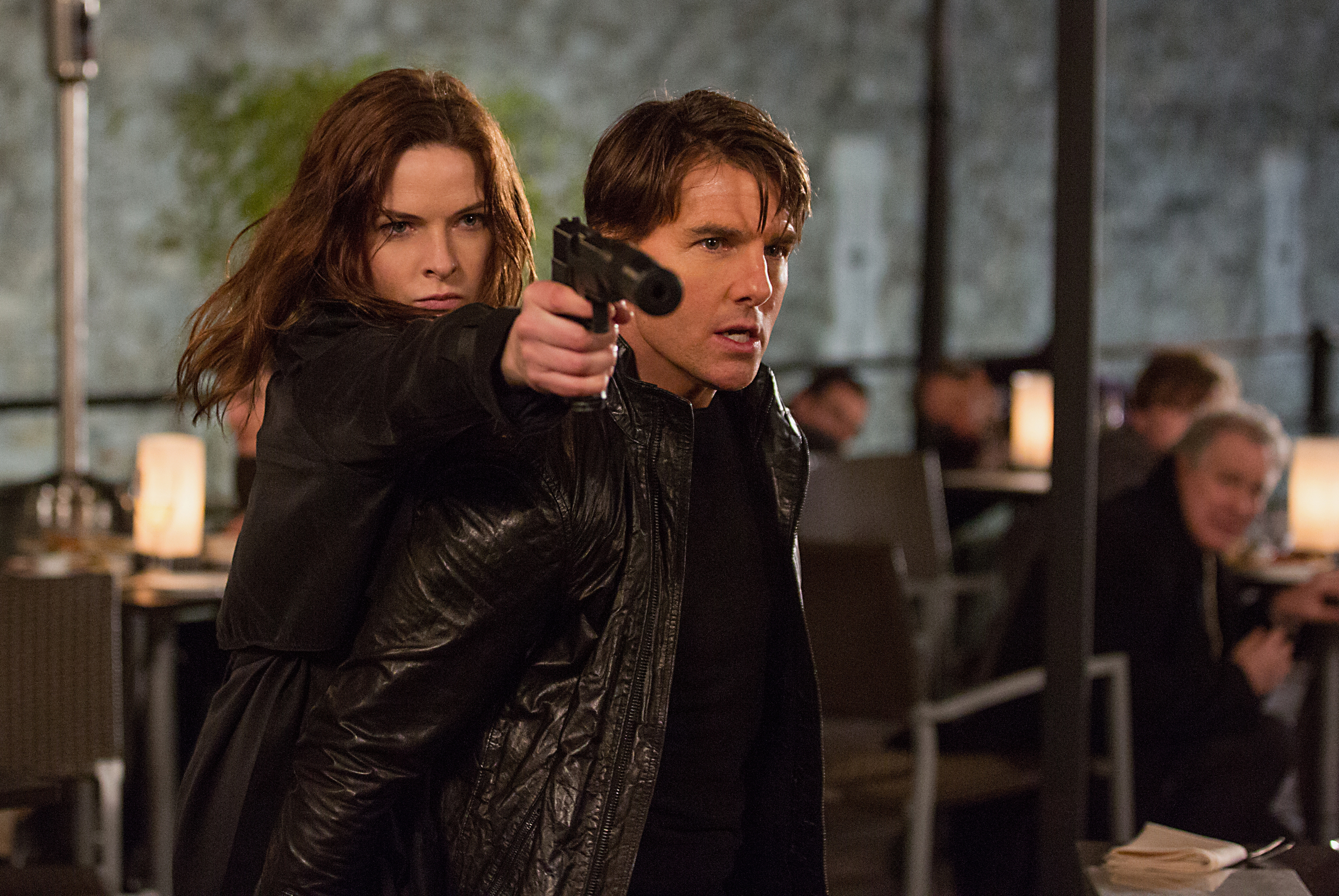The spy genre has been evolved significantly in the last couple of decades, primarily by moving away from the types of movies that made it popular. First, the Bourne films threw away the camp fantasy elements of the Bond franchise by setting themselves in an approximation of the real world. Chases and fight sequences still occurred, but they were gritty and violent, exaggerating on the types of conflicts that we could imagine happening off of official government records. Bourne’s success then influenced the James Bond series, which rebooted itself with Daniel Craig and an actual interest in the nature and character of Bond himself. Meanwhile, other attempts at the spy genre, such as the under-appreciated Kingsman, have paid homage to original spy movie tropes while simultaneously mocking and moving past them.
This is to say that it’s somewhat refreshing to see a movie like Mission Impossible: Rogue Nation, the fifth in the franchise, embrace those very cliches so wholeheartedly. The grit and self-awareness that inform its contemporaries are nowhere to be found in the world depicted here, where ultra-powerful secret nations of former operatives (think classic Bond’s SPECTRE) can operate without knowledge of the outside world while openly murdering individuals and taunting current operatives with messages about their existence. There is no subtlety here, just good guys, bad guys, and lots of impossibly-complex pre-planning.
That last bit may sound like a negative, but Rogue Nation is so deftly assembled that it actually becomes a strength. Pacing and momentary clarity are absolutely key here, so by using the language of the spy-movie genre writer-director Christopher McQuarrie is able to trim all but the most necessary pieces of exposition and action from the proceedings. This is a film that’s not afraid to skip forward as much as six months in the middle of an act to facilitate a quicker pace. When characters do have to exchange important information, McQuarrie makes sure that they do so within the action whenever possible, whether that be during a daring escape, or a rogue operation, or with a literal ticking bomb just feet away.
Of course, pacing alone would mean nothing if the set-pieces (the REAL reasons for the movie’s existence) failed to excite. Fortunately, they excel across the board by mixing impossible sights with actual, old-fashioned stunt work. Tom Cruise earns his paycheck here, visibly performing a lot of his stunts and reaffirming his unofficial title of “Most Cinematic Runner.” But the staging and editing of the scenes are just as responsible for their success.
My personal favorite comes early in the film, with a thwarted opera house assassination. The progression of the scene is a textbook example of good visual storytelling. We begin by following Benji (Simon Pegg) into an unfamiliar scenario, with series protagonist Ethan (Tom Cruise) as nothing but a voice in Benji’s ear. Ethan tells Benji and the audience all of the information necessary while Benji finds his way through the opera inconspicuously (another strong example of exposition over action), and it is not until we are fully caught up that the camera cranes from Benji to Ethan. This is invisible to most audiences but highly significant. By transitioning in-shot from one protagonist to the other, rather than simply cross-cutting throughout the scene, McQuarrie establishes that the center of the sequence has now shifted. From that point on, we’re focused on Ethan.
As Ethan scouts out the opera house and begins piecing together an assassination attempt, we are fed the same information at the same time he gathers it. Once there are seemingly too many pieces on the table at once, with three separate potential assassins and what appears to be only a single target, Ethan’s confusion mirrors our own and raises the tension. Who needs to be taken out? What is the plan? What are the consequences of failure?
Meanwhile, the scene connects on a visceral level as well, with acrobatics and fight scenes mixed in with the gunmen’s assault. It’s all set to the operatic music, which serves as a diegetic soundtrack for the full sequence. While lighter on spectacle than future action scenes, this sequence proves that sometimes spectacle is secondary to clever planning and scene construction.
If you’re past the point where you can take spy movies cliche at face value, you’re still going to have a problem with Mission Impossible: Rogue Nation. But as with all cliches, they exist for a reason. Rogue Nation is an engine of tension and plot-progression, as lean an action movie as there’s ever been. It has zero aspirations to be anything else, but it is damn good at what it sets out to do.
